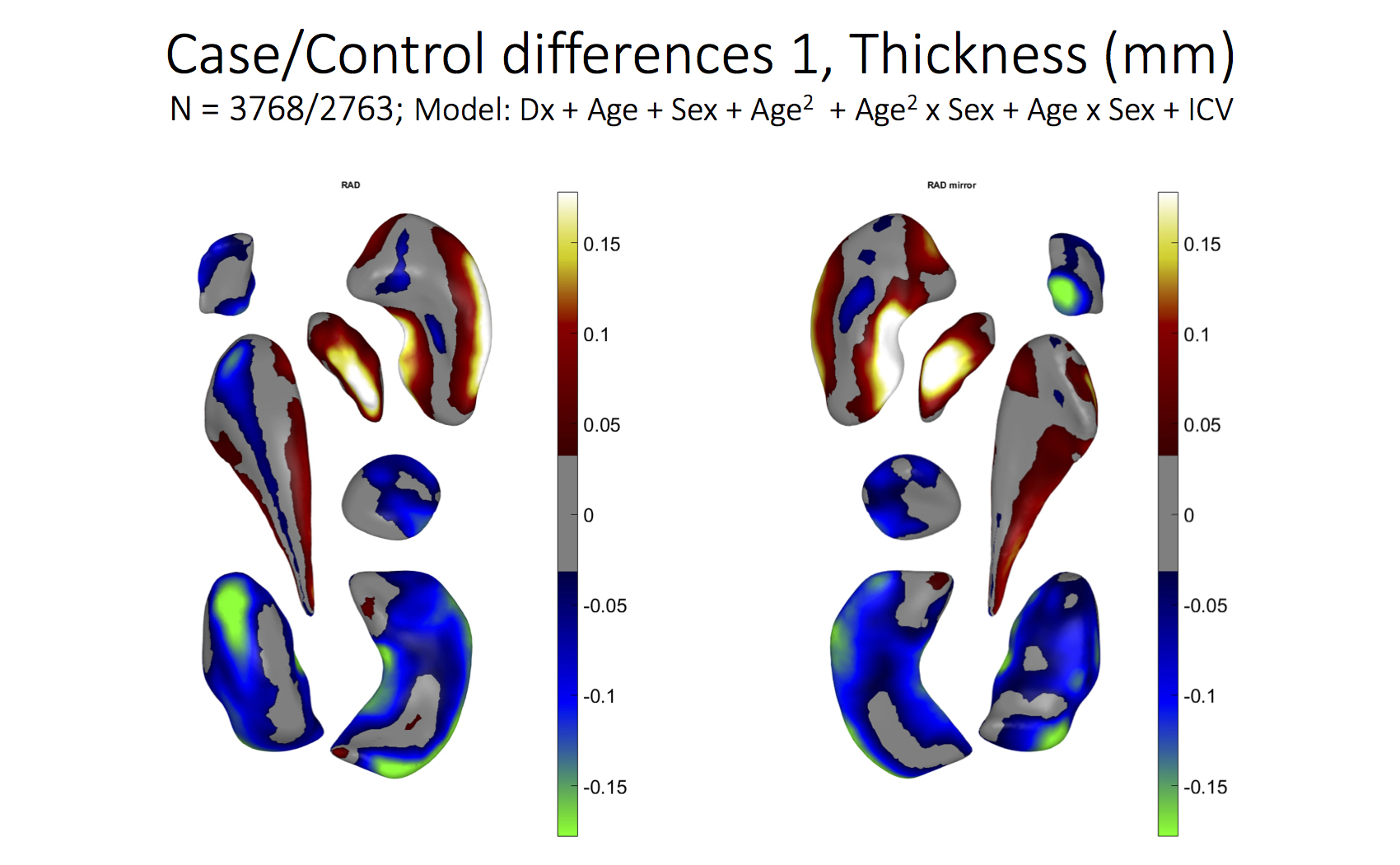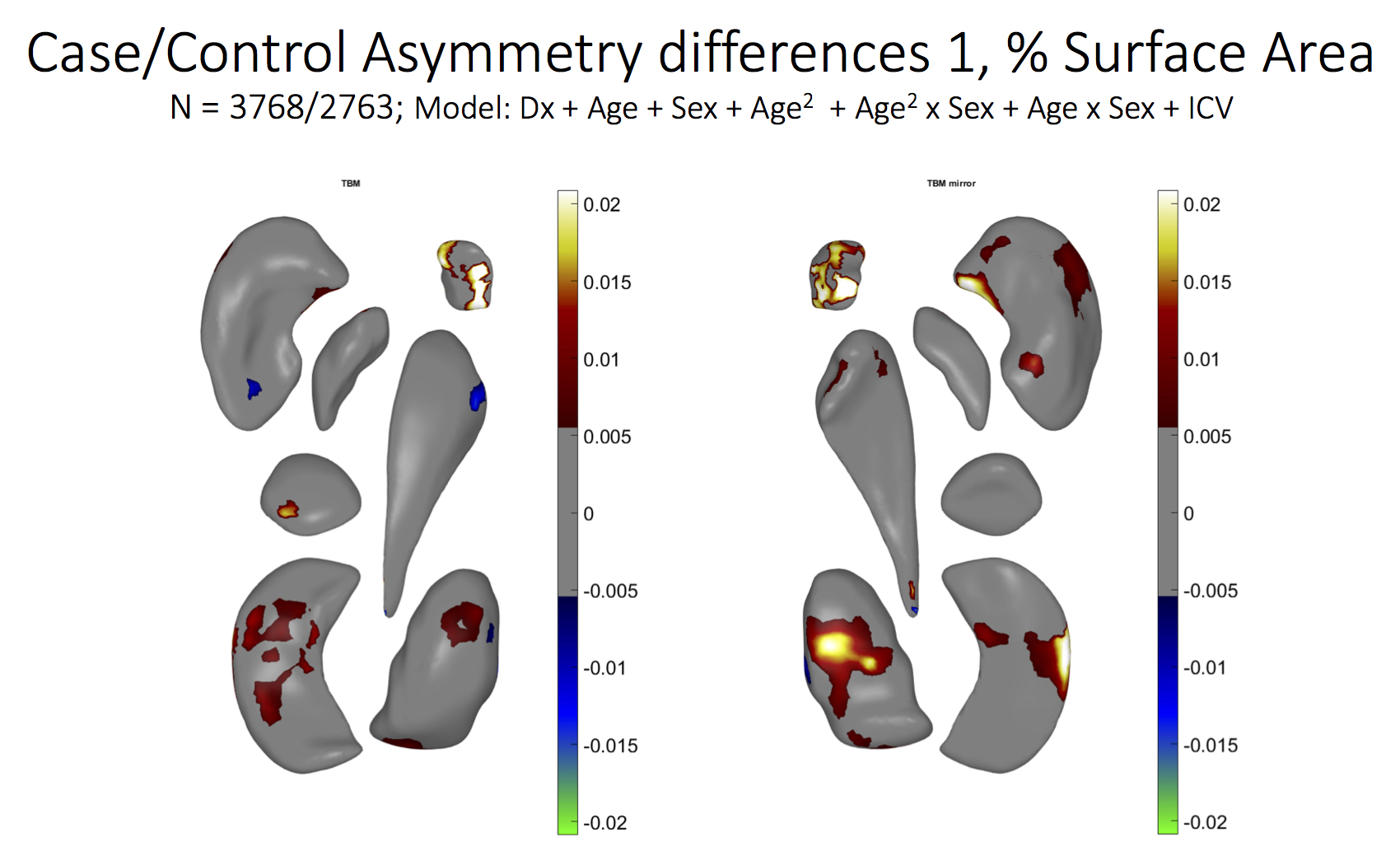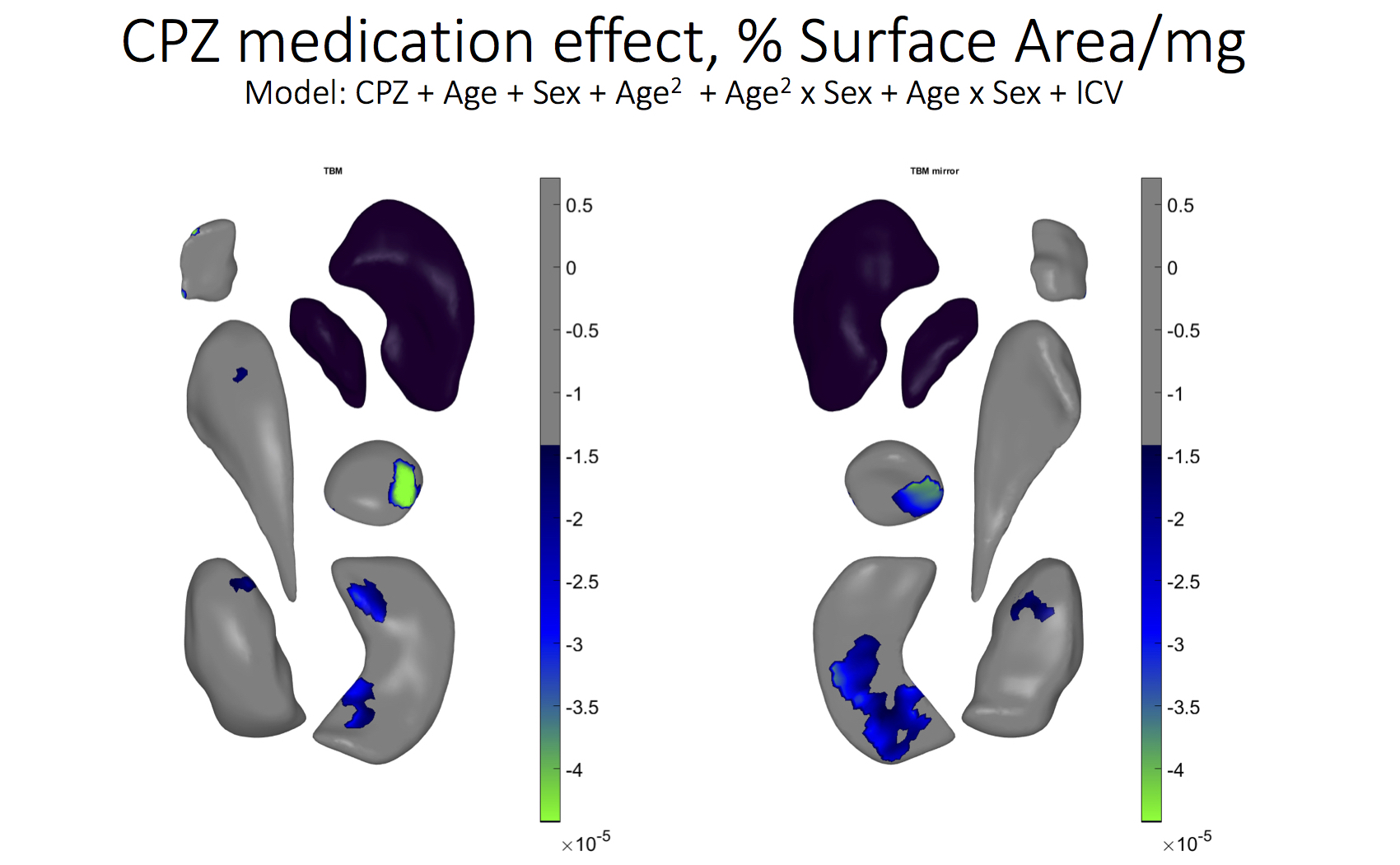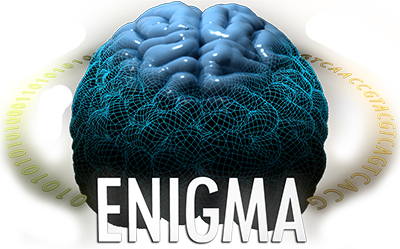Shape Alterations and Asymmetry in Deep Gray Matter Structures Associated with Schizophrenia and Anti-psychotics: an N=6500 Meta-analysis
Schizophrenia has been previously characterized by differences in deep gray matter structure volumes. Here, we take a detailed look at the specific morphometric differences driving these effects in a large 22-cohort meta-analysis study of 2763 patients and 3768 controls.
We use the ENIGMA-Shape package, a parametric surface-based computational tool used to measure thickness and surface area change at regional boundaries of 7 (14) bilateral regions: amygdala, nucleus accumbens, caudate nucleus, hippocampus, thalamus, putamen and pallidum. Also, we measure vertex-wise asymmetry in the context of schizophrenia. Searchlight False Discovery Rate correction is used to control for false discovery rate due to multiple testing at p=0.05. We control for age, sex, age^2, age x sex, age^2 x sex, and intracranial volume.
We report the regions affected and the 5th/95th percentile of the regression coefficient maps. We found a significant bilateral effect of schizophrenia on all seven structures, with effect range [0.031, 0.18] mm thickness. In addition, schizophrenia patients’ hippocampus, thalamus, putamen, caudate and nucleus accumbens were significantly less symmetric compared to controls. There were also significant reductions in sections of the hippocampus, amygdala, thalamus, caudate and nucleus accumbens associated with chlorpromazine use, effect range [7.1x10-5, 1.4x10-4] mm/mg.
We have for the first time analyzed subcortical shape symmetry in a large meta-study of schizophrenia. We found a widespread effect in seven subcortical regions, and data that symmetry may play a crucial role in understanding the disorder. In addition, we found concordant effects of antipsychotic medication and the disorder on deep gray matter structure morphometry.



Boris A. Gutman1, Theo van Erp2, Kathryn Alpert3, Dmitry Isaev1, Artemis Zavaliangos-Petropulu1, Vince Calhoun4 , David Glahn5, Ted Satterthwaite6, Ole Andreas Andreasen7, Stefan Borgwardt8, Fleur Howells9, Aristotle Voineskos10, Joaquim Radua11, Steven Potkin2, Benedicto Crespo Facorro12, Li Shen13, Irina Lebedeva14, Gianfranco Spalletta15, Gary Donohoe16, Peter Kochunov17, N. Trung Doan7, Ingrid Agartz7, Fabienne Harrisberger8, Dan J. Stein9 , Erin W. Dickie10, Erick Jorge Canales-Rodriguez11, Alexander J. Huang2, Roberto Roiz-Santiañez12, Shan Cong13, Alexander Tomyshev14, Fabrizio Piras15, Paul M. Thompson1, Jessica Turner4* and Lei Wang3* for the ENIGMA Schizophrenia Working Group
- 1Imaging Genetics Center, Keck SOM of USC, Los Angeles
- 2University of California, Irvine
- 3Psychiatry, Northwestern University, Chicago
- 4 The Mind Research Network, Albuquerque
- 5Yale University School of Medicine
- 6University of Pennsylvania
- 7University of Oslo faculty of Medicine
- 8 Department of Psychiatry, University of Basel
- 9Psychiatry, University of Cape Town, Cape Town
- 10Centre for Addiction and Mental Health, Toronto
- 11FIDMAG Research Foundation, Barcelona
- 12 University Hospital Marqués de Valdecilla, IDIVAL, CIBERSAM
- 13Dept. of Radiology and Imaging Sciences, Indiana University
- 14Mental Health Research Center, Moscow
- 15Neuropsychiatry Laboratory, Sta Lucia Foundation, Rome
- 16 School of Psychology, NUI Galway
- 17Maryland Psychiatric Research Center, Department of Psychiatry, University of Maryland School of Medicine, Baltimore
ENIGMA on social media:


